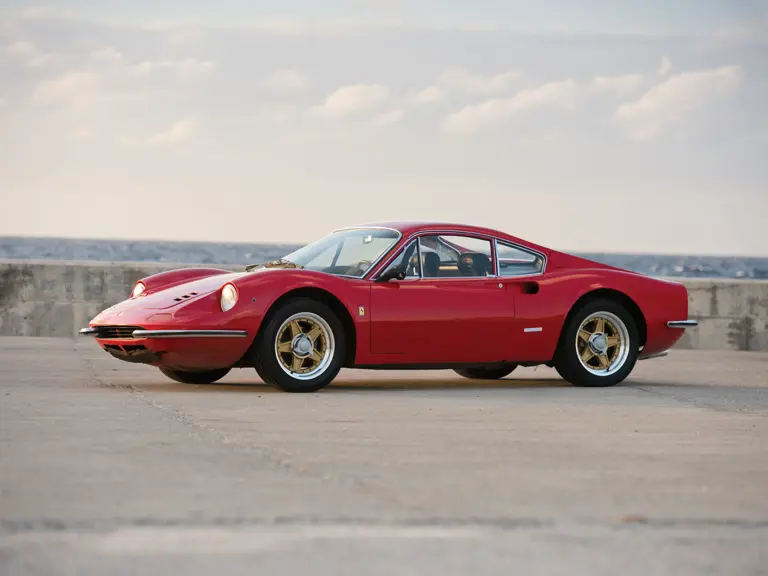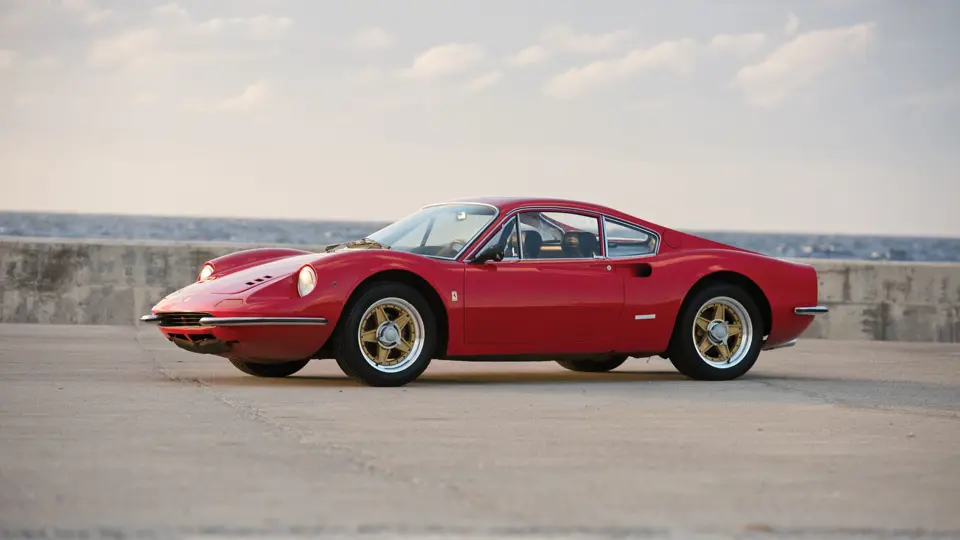No one quite realized at the time, but the car on Pininfarina’ s stand at the 1965 Paris Auto Salon was the forecast of Ferraris to come. Called the “Dino 206 S Speciale,” it was a sleek, competition-inspired coupe to be powered by a twin-cam, 65-degree, Ferrari-designed, mid-mounted V-6. Dubbed a “research prototype” and built on a racing chassis, it was merely “eye candy” as it had no engine. Four prototypes were constructed. Less than one year later the real car appeared, this time at the 1966 Turin show as a running prototype called the Dino Berlinetta GT. It was a masterful blending of sensuous curves and stunning proportions.
Like the show original show car, the production model shared the mid-engine V-6; this time mounted transversely rather than longitudinally as in the show car. Within six months of introduction and production of just 100 cars, the 246 GT was introduced. It was Ferraris attempt to satisfy the growing American market which demanded more power. The larger 2.4-liter (2,418-cc) engine fed by three Weber carbs and backed by the five-speed manual gearbox as used in the 206, offered 15-hp more and greater flexibility throughout the rev range. The engine was constructed of cast iron instead of alloy for greater reliability and the wheelbase extended 2.1 inches for a like gain in cockpit space.
The 246 Dinos became the first Ferraris to receive pressed steel body panels that were stamped at the Pininfarina factory in Turin, followed by body assembly at the Scaglietti works in Modena before being transported to the Ferrari factory for mechanical assembly. The 246 GTS featuring a removable targa roof and built exclusively for the U.S. market was introduced in 1972. Ferrari produced approximately 1,200 units of the new model for American consumers. Along with production of 2,800 246 GT’s, Dinos were built until 1974.
According to Marcel Masseni, Ferrari expert, this Dino was born left-hand drive and delivered in Argento Metallizzato with a Nero VM 8500 interior. It was factory invoiced on May 4, 1970 to its first owner Paul Hegard, a resident in Worchester Park, UK. It was delivered on Italian tourist license plates EE 2853. Little else is known of the history of this Dino other than it was purchased in the 1990's by the Cayman Motor Museum where it has resided since. Currently the car wears red exterior paint while it appears to have its original black leather interior and red wool carpeting; all in very good condition. It is fitted with period Talbot mirrors and Compomotive two-piece knock-off wheels.



 | Fort Lauderdale, Florida
| Fort Lauderdale, Florida


